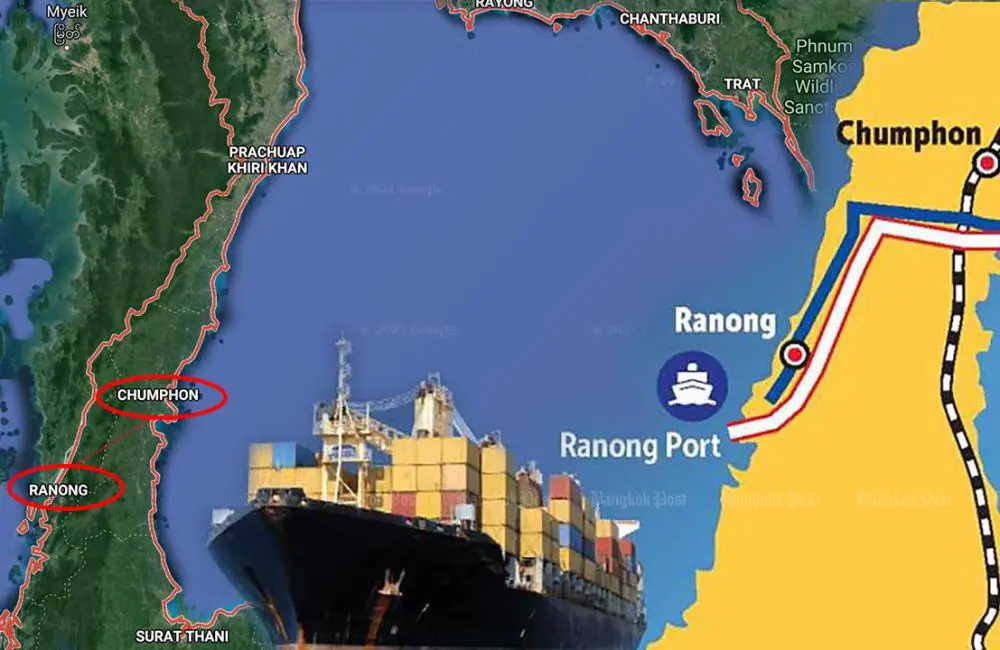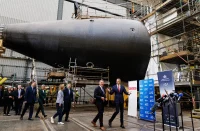The grand strategic goal is first and foremost to pioneer a viable alternative to the Malacca Strait, though ideally with the supplementary goal of getting China and the US to jointly cooperate on this in order to accelerate the incipient thawing of their tensions.
Time Magazine published a piece ahead of this week’s APEC Summit in San Francisco about how “Thailand Pitches New Investors in U.S. on Old Idea of Southeast Asia Shipping Route Shortcut”. It served to raise awareness of the new premier’s efforts to court American and Chinese investment for a series of megaprojects that he calls the “Landbridge”. This refers to road and rail routes that he envisages crossing the Kra Isthmus to cut transport time by four days and costs by 15% compared to the Malacca Strait.
As Sino-US tensions begin to thaw somewhat as evidenced by this week’s meeting between their leaders on the sidelines of that event, it’s indeed possible that both New Cold War protagonists might put their systemic rivalry aside in order to jointly cooperate on this initiative as a symbolic trust-building measure. Their respective strategic-economic interests are advanced by pioneering a viable alternative to the Malacca Strait, and working together on this could accelerate the aforesaid incipient thaw.
 It’s not just China’s trade with Africa, Europe, and West Asia that could more easily be scaled sometime in the future upon the possible completion of this megaproject, but the rest of East and Southeast Asia’s as well, not to mention Indo-US trade too. Seeing as how the overwhelming majority of Chinese foreign trade is still conducted via maritime routes in spite of its overland Belt & Road Initiative (BRI) corridors like the Central Asian, Myanmar, and Pakistani ones, nobody stands to lose from this.
It’s not just China’s trade with Africa, Europe, and West Asia that could more easily be scaled sometime in the future upon the possible completion of this megaproject, but the rest of East and Southeast Asia’s as well, not to mention Indo-US trade too. Seeing as how the overwhelming majority of Chinese foreign trade is still conducted via maritime routes in spite of its overland Belt & Road Initiative (BRI) corridors like the Central Asian, Myanmar, and Pakistani ones, nobody stands to lose from this.
The trade that’s already transiting across those abovementioned routes likely won’t be affected by this since there’s a logical economic reason that they’re being used instead of maritime routes. That selfsame economic logic could continue driving the further expansion of trade through these BRI-related means independently of the other trade that China currently conducts by sea. This insight confirms that the “Landbridge” is truly a mutually beneficial megaproject with no zero-sum consequences for anyone.
Another to point to make is that Thailand’s efforts to maximally diversify stakeholders in this initiative, most importantly by courting American and Chinese investment, can reassure everyone that it’ll remain open to all since no one would exert the influence over Bangkok that could coerce it to shut others out. By balancing investments from those top New Cold War protagonists like its new premier intends to do, such a scenario would be discredited, thus serving to attract even more investment from other sources.
The grand strategic goal is first and foremost to pioneer a viable alternative to the Malacca Strait, though ideally with the supplementary goal of getting China and the US to jointly cooperate on this in order to accelerate the incipient thawing of their tensions. Even if those two’s rivalry continues worsening for whatever reason, at least they’d each know that the other wouldn’t be able to shut them out of this route, which might prevent Thailand from turning into an object of competition between them.
Source: the author’s blog














Comments